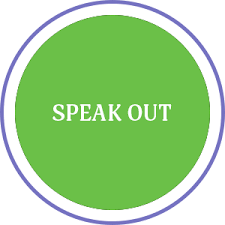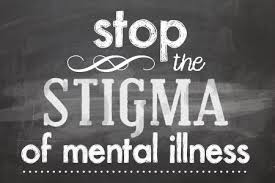Mental illnesses are like any other illnesses – the only difference is that they are illnesses of the brain instead of the body. Are they really so different from heart disease, diabetes and asthma? Yet, the tradition of bringing flowers, showing sympathy and support provided to people with physical illnesses, are missing here. Why deny them the same sympathy and empathy?
ARE MENTAL ILLNESSSES INCURABLE AND LIFELONG?
When treated appropriately and early, many people manage to recover. A mental illness is like many physical illnesses that require ongoing treatment – like diabetes and heart disease which can be managed enabling an individual to participate in everyday life.
Some people have only one episode of mental illness and manage to recover completely, but, for our son, it recurred throughout his life and required ongoing treatment.
ARE PEOPLE BORN WITH A MENTAL ILLNESS?
We understood that the causes were unclear. Stress, bereavement, the breakdown of a relationship or unemployment, can be the trigger. Many individuals explain away a mental illness as a ‘nervous breakdown’ rather than chance becoming branded as being ‘mentally ill.’
Monthly Archives: February 2015
How to reduce stress
 When life becomes unbearable due to an overload of work or stress; when we find ourselves losing our tempers too fast and too often, that’s when we need to learn stress-reduction techniques. That’s when it’s imperative to break away from routine activities and go swimming, walking, to concerts, plays or movies, or to any place that enables us to escape from the cause of our stress.
When life becomes unbearable due to an overload of work or stress; when we find ourselves losing our tempers too fast and too often, that’s when we need to learn stress-reduction techniques. That’s when it’s imperative to break away from routine activities and go swimming, walking, to concerts, plays or movies, or to any place that enables us to escape from the cause of our stress.
When my son was ill, the beach was most definitely my favourite get-away-spot as the waves breaking on the shore, calmed me, for a while anyway. If I did not have sufficient time to do this, I searched for a quiet place where I could do some writing and instead of envisioning a new story to write about, I found myself listing all the things that were upsetting me. Imagine my surprise when I discovered that those lists filled pages and pages. Slowly but surely, I worked on myself to reduce some of the self-induced stress and managed not to get upset if my cake flopped when I was expecting friends for coffee. I no longer got upset if someone did not enjoy my food. I cared less about the dust that had accumulated on the furniture too.
I learned to search for the positive things in my life and made up two lists; one had the heading positive while the second heading was negative. Imagine my surprise when the list on the positive side actually outnumbered the other. So? That meant that I had become a bit more optimistic and from then on, made it my business to search for the half-full glass rather than the half-empty one. And the result was? I felt a whole lot better since I was no longer allowing my anger to wear me down. This change of attitude did not occur overnight but is well-worth working on.
Thoughts can take on a life of their own
The following thoughts can take on a life of their own, twisting through memories to find even more evidence of why they are true, pushing further into one’s sadness and consolidating one’s commitment to even more isolation.
Here are examples of how someone can feel:-
I mess up everything I touch.
I can’t do anything right.
I can’t trust anybody.
I hurt people.
Everyone hurts me.
I am worthless.
I am unlovable.
Nobody wants me.
Everybody leaves me.
Does any of this sound familiar? IF you feel this way, visit a friend or relative.
If you feel this way, try to change your thoughts and reach out to someone familiar – anyone.
Do you think that this might make you feel worse? Well, it might even make you feel better.
You don’t have to tell the relative how you are feeling, but, talking about anything, will probably help somewhat. Try to get rid of the thoughts in your head.
This might have even worked for you in the past, so — try it again.
Don’t delay.
Why does Papa act this way?
Alzheimer’s is not easy to cope with, and it became difficult to reply to the barrage of questions asked by my grandchildren who wanted to know why their Papa acted the way he did. I thought long and hard in order to come up with a reasonable explanation, then this is what I said:
‘Your Papa has an illness called Alzheimer’s and that makes him act the way he does. It’s a bit like having a broken leg, you know. But with Papa, a small piece of his brain is broken and doesn’t work the way it should. Because of this, he can’t remember what you told him yesterday. Because of this, he forgets how to use the television remote. Because of this, he often falls asleep when you are in the middle of telling him something important. Because of this, he forgets people’s names. BUT, the part of Papa’s brain that is for loving, still works well, and I know that he loves you all very much.’
Then I showed them the diagram below of a healthy brain, and one showing what Alzheimer’s disease does to a brain.

The image on the left is of a normal, healthy brain. The one on the right, shows signs of Alzheimer’s Disease,
‘You are suffering from dementia … probably Alzheimer’s disease…’
 ‘I have good news for you, as well as some bad news,” the geriatric neurologist told my husband.’
‘I have good news for you, as well as some bad news,” the geriatric neurologist told my husband.’
‘Start with the bad news doctor.’
‘You are suffering from dementia, probably Alzheimer’s disease.’
‘So what good news could you possibly have for me after dropping that bombshell?’’ my husband wanted to know.’
‘Well, in less than an hour, you will probably have forgotten this conversation altogether.’ …………. And that was our introduction to the unfamiliar, frightening world of Alzheimer’s, which turned out to be a long journey for us all.
Quiet background music in a psychiatric hospital … ?
. There is often a high level of noise in a psychiatric ward as the television might be blaring, a patient might be in distress, someone else could be listening to a youtube clip and another few people talking on their phones. I would like to suggest that light classical music, the more modern and well-known pieces, be piped, under strict supervision, of course. I find it soothing and I know that many find it equally calming. Nothing can be lost by trying, now can it?
There is often a high level of noise in a psychiatric ward as the television might be blaring, a patient might be in distress, someone else could be listening to a youtube clip and another few people talking on their phones. I would like to suggest that light classical music, the more modern and well-known pieces, be piped, under strict supervision, of course. I find it soothing and I know that many find it equally calming. Nothing can be lost by trying, now can it?
 From the sublime to the ridiculous?
From the sublime to the ridiculous?
How about building a swimming pool for each psychiatric hospital? Water is calming too. The only problem is the cost of building the pool and the lifesaver’s salary.
How to combat peer pressure …….
 Negative Peer Pressure makes a person feel unaccepted by their peers who bring strong pressure to bear no matter what does ,they do, whether they want to do so or not. More often than not this turns out not to be in one’s best interest. It feels as if people don’t like us for who we are and fail to respect us. Peer pressure occurs mostly to kids and teens, but can affect anyone of any age. Most of us have been victims of peer pressure at some point in our lives. Kids want to fit in with the crowd. Kids want to be cool. Sometimes what the cool kids are doing isn’t really that cool at all and can land them in trouble at an early age. Some of these habits could be sex, drinking, drugs or even violence. Kids and young adults who are usually well behaved can fall victim to peer pressure just as easily.
Negative Peer Pressure makes a person feel unaccepted by their peers who bring strong pressure to bear no matter what does ,they do, whether they want to do so or not. More often than not this turns out not to be in one’s best interest. It feels as if people don’t like us for who we are and fail to respect us. Peer pressure occurs mostly to kids and teens, but can affect anyone of any age. Most of us have been victims of peer pressure at some point in our lives. Kids want to fit in with the crowd. Kids want to be cool. Sometimes what the cool kids are doing isn’t really that cool at all and can land them in trouble at an early age. Some of these habits could be sex, drinking, drugs or even violence. Kids and young adults who are usually well behaved can fall victim to peer pressure just as easily.
The good news is we can always say “NO”. One of the easiest ways to get out of a peer induced situation is to simply say “NO” and walk away which may not feel as cool at the time, but a decision we will be thankful for at a later stage.
Take a stand for what you believe is right. Don’t go through life regretting that you let others make major decisions for you. Taking a stand is the right thing to do as it demonstrates self-respect to your peers and is one of the key components of breaking the peer pressure cycle.
We need to determine who our real friends are and which ones aren’t going to pressure us into doing stuff we don’t want to do. When we ask people who have fallen victim to peer pressure why he or she did so, one of the most common responses is: We never, ever thought that or friends would lead us down that path. We trusted them to help us make the right decision. We thought that real friends would never make us do something we didn’t feel comfortable with or involve us in something that would land us in trouble. So, be selective before making friends and careful about the people whom you choose to hang out with. If they are troublemakers you will probably end up making some of the same decisions as they do.
Another great way to combat peer pressure’s negative effects is to love yourself. If you have a high enough self-esteem you aren’t really going to feel the need to fit in as much. Studies show that people with high self-esteem almost never fall victim to bad peer pressure situations. Love yourself for who you are no matter what.
Parents can help their children combat peer pressure by teaching them at a young age why they should set limits and how to stand up for themselves. They need to make decisions based on what they want to do and not what anyone else wants them to do.
What to say to someone who is grieving
What I would say to someone who has lost a child?
I’m so sorry. I don’t really know what to say, but I want you to know that I feel deeply for you and your family and I only wish I could do more. I will be thinking of you. It must be impossible to absorb the tragedy of losing a child this way.
Very few people spoke to me this way when my son took his life, and those who did, probably had no idea how good it made me feel to hear their honest and meaningful words. It was so good because they did not ignore all reference to my child. They opened the conversation for me to talk about him at my own pace which helped a great deal. Nothing that anybody said could alleviate my pain but there were things that eased my heartache somewhat.
Being in the company of others who have experienced the same pain and loss, really made a difference. My family stayed home for the seven days of mourning which is a Jewish custom when dealing with mourning and grief after a funeral but, when that week came to an end, I had to reacquaint myself with the world of the living – with ‘NORMAL LIFE’ … whatever normal life was, and that was a frightening prospect. I had to figure out how to live with a huge hole in my heart. I wasn’t really ready for that. I still had more grief to process. I was afraid to attempt normal living in my damaged condition. I needed more time, so this is what I did.
I donned a pair of sturdy rubber gloves and started spring cleaning, moved heavy furniture and waged chemical warfare against any living creature that dared enter our home. In short, I scrubbed my life down to its bones. I needed the physical workout, but even that was insufficient, so I went out into our large garden and dug and weeded till exhaustion left me unable to think straight.
Much later, when I collected the mail, I found flyers advertising tombstones – singles or doubles, black or white, decorative or plain. A friend who dropped in to see how I was, advised me to dump them in the garbage bin, saying: When you are ready to deal with tombstones, you will choose one, but now is not the time. How right she was.
That same friend took me food shopping and from time to time, persuaded me to visit a mutual friend but, we always found more than one guest present. What I needed to hear was; Meet my friend, Jill who lost her son recently, which would have freed me from replying to the dreaded question; How many children do you have?
That question preoccupied me as well as my late husband, as most people tend to ask that question at some stage. My heart raced when I sensed it was on the agenda and I wondered what I would say/could say. ‘ I lost a son but have two daughters, OR I have two daughters.’ But that felt as though I were deleting my son’s existence. We never managed to resolve that issue.
They avoid studying psychiatry
I have written a great deal about the stigma associated with mental illness but I want to add that it actually invades the attitude of health care professionals in spite of their medical education. In fact, some psychiatrists actually reflect the prejudice of the public they are serving by helping to perpetuate stigma. This very STIGMA associated with mental illness, actually steers medical students away from studying psychiatry. Isn’t that a shame?
There is barely a day when someone who has read my blog doesn’t call to ask a question or e-mail me asking whether I can advise them. My reply? I cannot give advice as I am neither a psychologist nor a psychiatrist. All I can do is tell you what I would have done in the same position when my son was so ill, OR, what I would have done today with the hindsight I have gained. Make an appointment to speak to a psychiatrist.
And then I am told that there are fewer psychiatrists. One explanation is because psychiatry is the most indefinite part of medicine today. Another is, because they don’t have a single definitive test that can be done to determine the prognosis.
DAVID’S STORY by Jill Sadowsky
DAVID’S STORY by Jill Sadowsky
‘When we talk to God it’s called prayer.
When God talks to us, it’s called s c h i z o p h r e n i a
(by Lily Tomlin)
Dvora Waysman, author of 11 books wrote:
David’s Story is a heartbreaking study of the progress of schizophrenia, destroying not just one life, but making tragic inroads into the lives of every family member. This story gripped me from the first page and I grieved along with the author. I highly recommend it.
Jill Sadowky’s honest recording of image of David’s Story, her son’s little-understood mental illness, is written with sensitivity and compassion born out of love and pain.
DAVID’S STORY is available as a kindle e-book from Amazon.
Jill’s blog, which appears three times a week, is available at the following link: https://jillsmentalhealthresources.wordpress.com/






